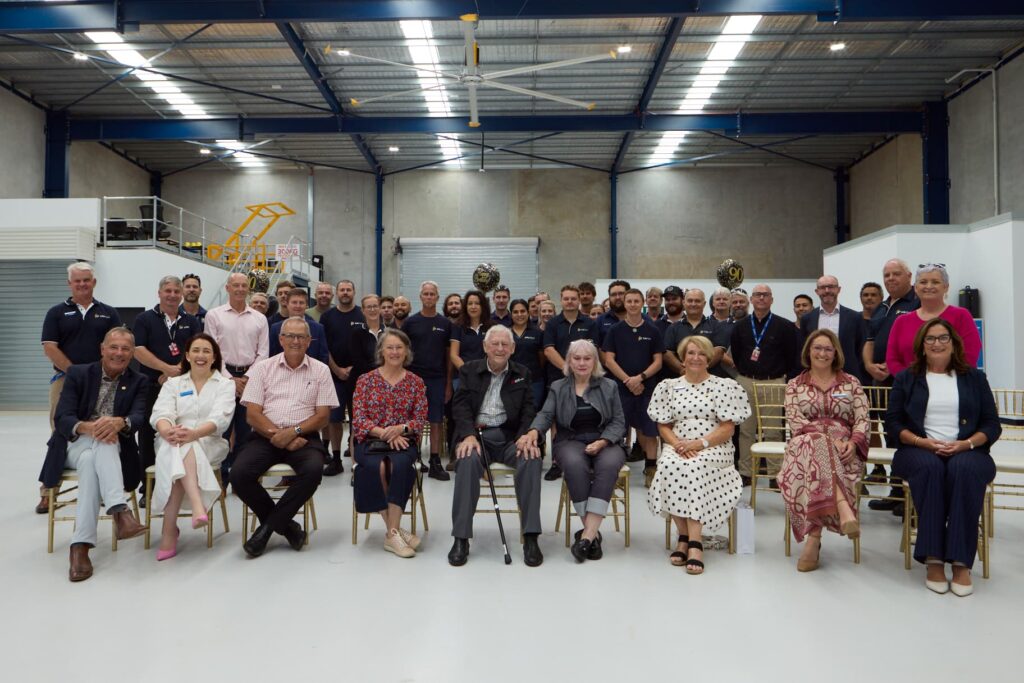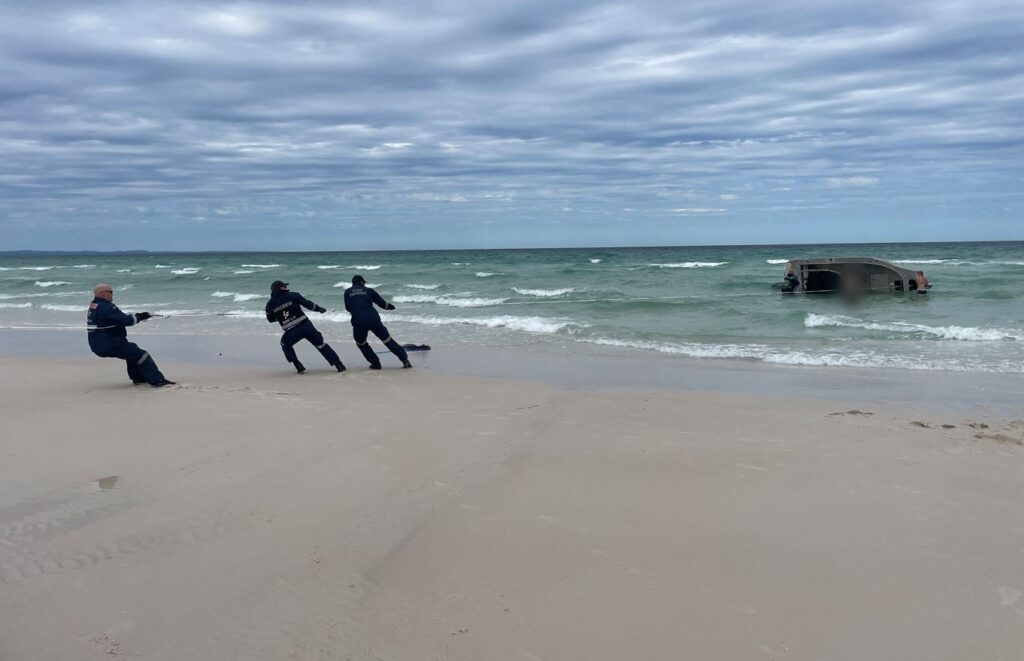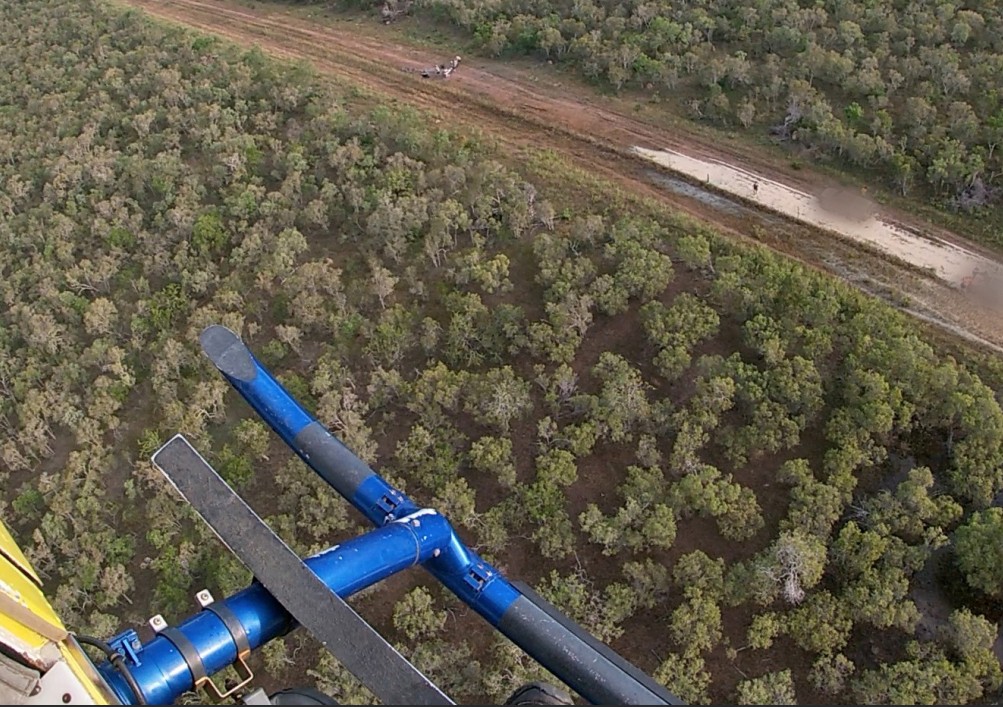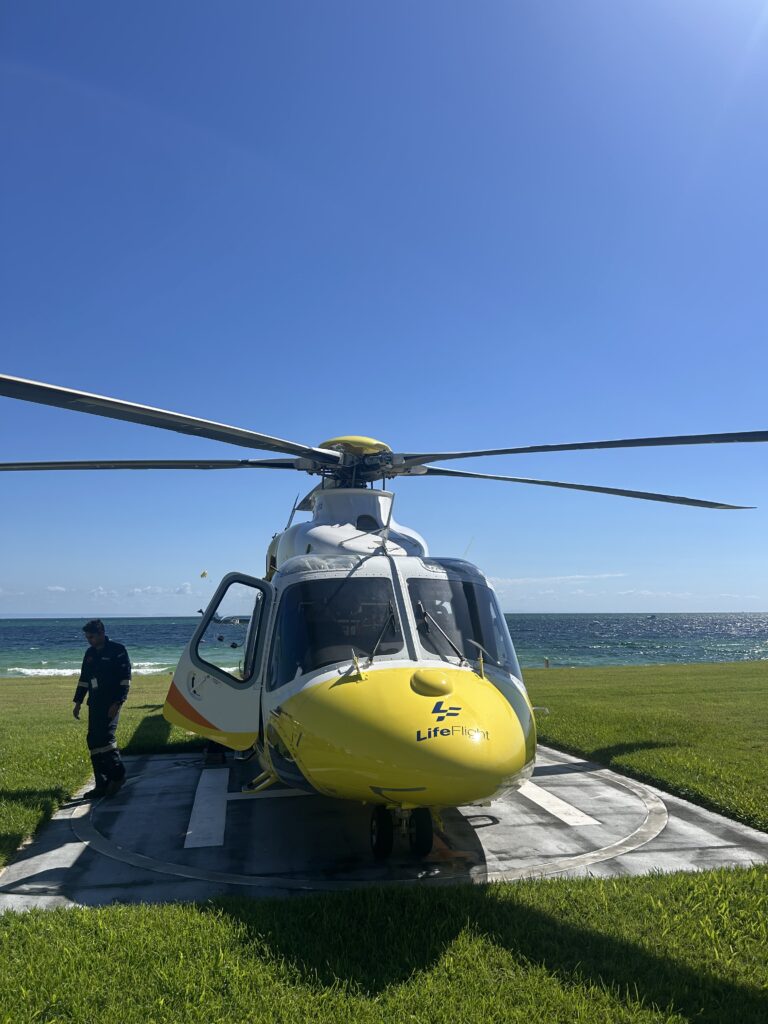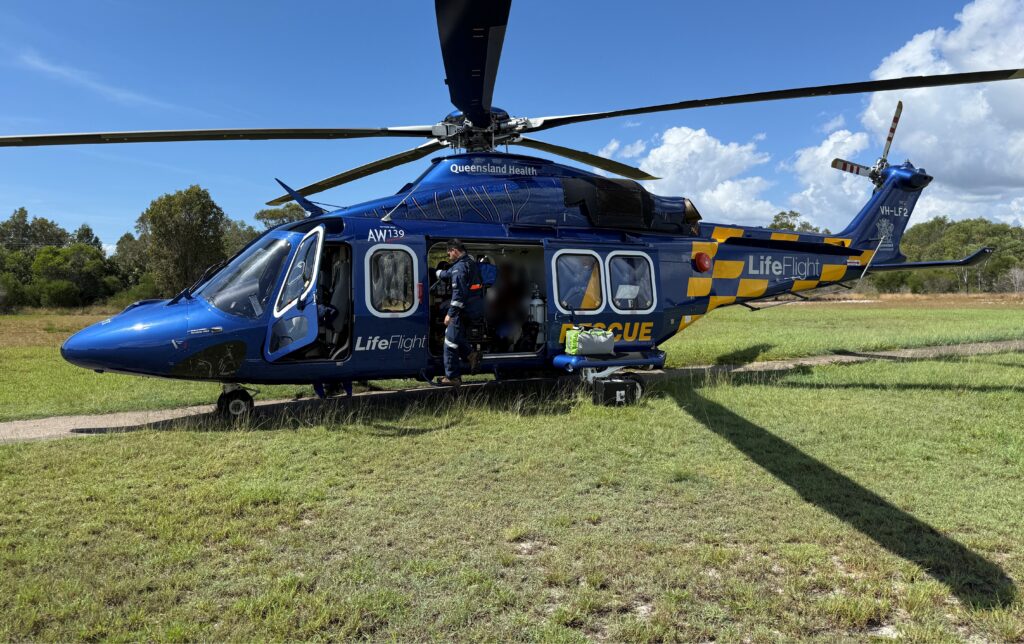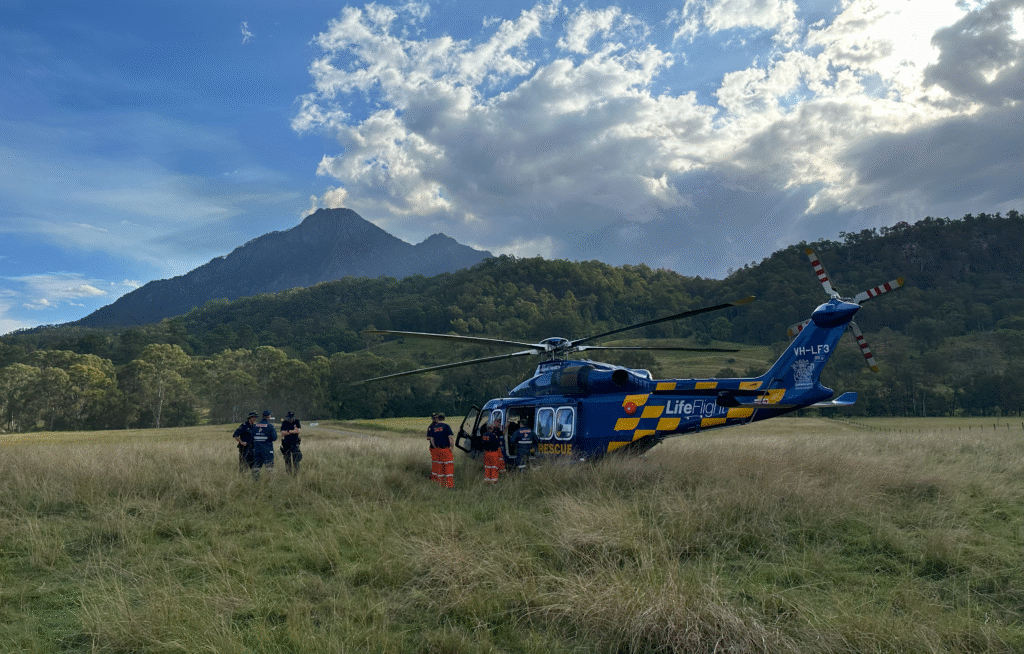LifeFlight’s specially trained aeromedical crews must learn to see in the dark.
New data released this week shows 32 per cent of airlifts in the year’s first quarter so far have taken place at night.
This is up from 30 per cent from the prior corresponding quarter in 2024.
It’s a specialist capability made possible by the latest technology in night vision goggles (NVG) and more are needed.
For Chinchilla Hospital nurse Xanthe Dewar, the technology was vital in airlifting her son late at night during a medical emergency.
Ms Dewar was camping at Goomburra in the Southern Downs region last year with her husband Ben and their twin four-month-old boys Harvey and Patrick.
Harvey woke up one morning with increased respiratory effort, with a nasty looking rash on his right leg and a swollen fontanelle, Ms Dewar was concerned he may have meningococcal.
They drove to Warwick Hospital where the doctor confirmed meningococcal was a possibility and Harvey would need to be airlifted to Queensland Children’s Hospital (QCH).
“When the doctor thought it might be meningococcal, my heart sank,” Ms Dewar said.
“I was holding it together but when the doctor confirmed my fear it was an awful feeling, and I turned to my husband and burst into tears.”
By 9pm she was in the LifeFlight helicopter with Harvey enroute to Brisbane.
“The team were writing messages to me on their phone to let me know what was going on,” Ms Dewar said.
“Those messages were really reassuring because the monitor kept beeping, but I couldn’t see the screen.”
Twenty-nine minutes later, the helicopter touched down at the QCH helipad.
“The flight there was incredible,” she said.
“I felt comfortable and confident from the minute they walked in.
“Thankfully, our little man didn’t have a life-threatening disease and was treated for a viral infection and thanks to LifeFlight, we were able to get to Queensland Children’s Hospital quickly to rule out meningococcal.”
The mission to airlift Harvey was one of thousands undertaken at night by LifeFlight crews using night vision goggles (NVG), which are an essential tool of the trade for emergency medical services.
LifeFlight Head of Flying Operations Jeremy Ovens, said the technology is lifesaving.
“You could have someone stranded on the edge of a cliff at night, and that rescue just wouldn’t be possible without using night vision goggles,” he said.
“There are many landing areas where there is a lack of light at night, such as school sports ovals or paddocks, so the goggles enable us to execute landings safely.
“We can also see obstacles such as trees and power poles, which without the goggles would be impossible because it’s pitch black.
“We have the best rescue helicopters in the world – the AW139 – and the goggles give us the ability to deploy whenever we are needed, no matter the time.”
Mr Ovens said flights crews undertake comprehensive NVG training to ensure they are proficient in their use.
“We do this twice a year with crews first using the flight simulator and then in practical flight tests using the goggles,” he said.
“The goggles are fragile and expensive so there has to be extremely detailed procedures on how to handle them.”
LifeFlight Chief Operating Officer Lee Schofield, said the increasing frequency of night-time airlifts was due to two factors.
“The first is strong population growth in Queensland, particularly in the regional areas where we operate such as Toowoomba, Sunshine Coast, and the Wide Bay – Burnett regions,” he said.
“On top of that, our expanded capabilities, with new AW139 helicopters, mean we are getting tasked more at nighttime to help Queenslanders in their time of need.”
LifeFlight is currently fundraising to ensure every LifeFlight helicopter aeromedical team has access to additional state-of-the-art night vision goggles. www.lifeflight.org.au/NVG





